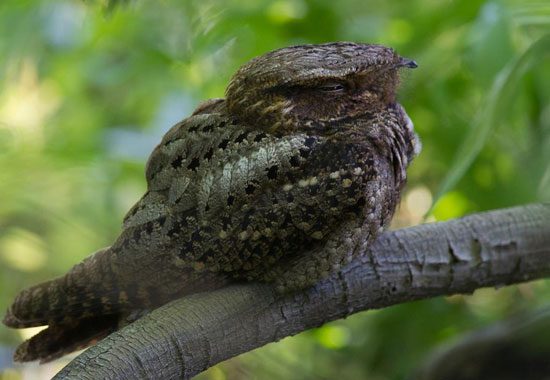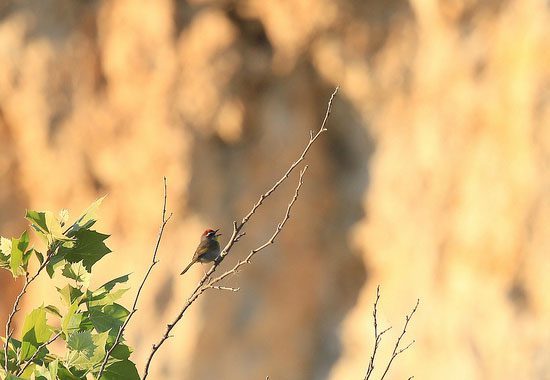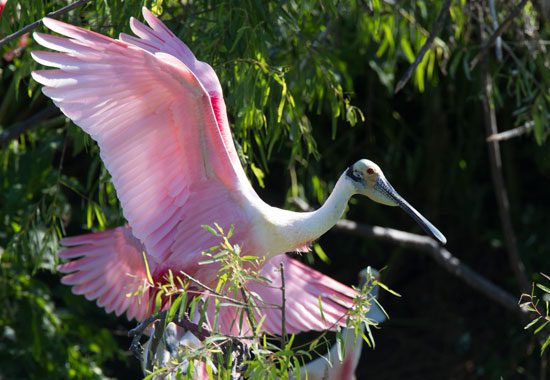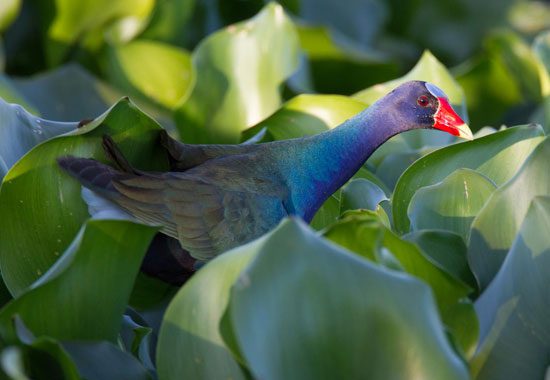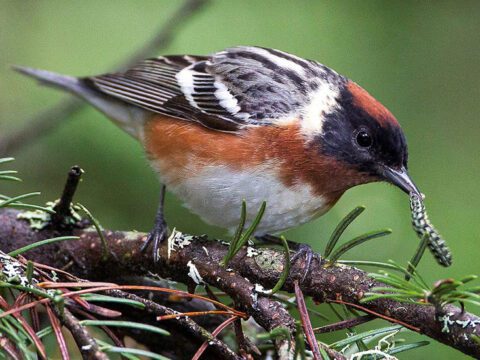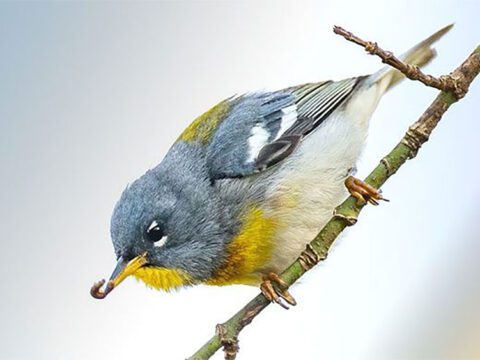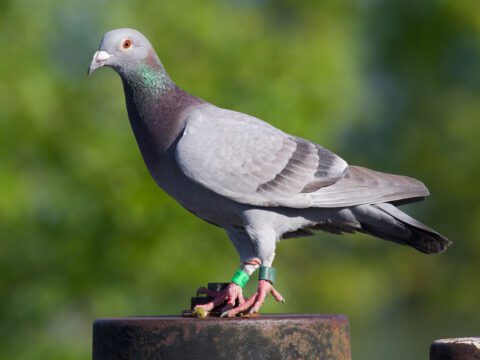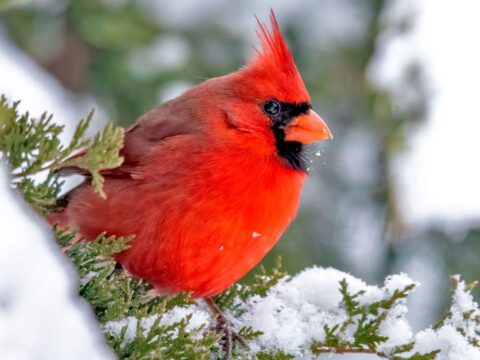Big Day Forecast—Fair South Winds, With a Good Chance of Birds
By Gustave Axelson April 26, 2012
Chuck-will's-widow spotted at High Island. 
A rare Rufous-capped Warbler at Chalk Bluff. 
Roseate Spoonbill seen at High Island. 
Purple Gallinule found at Tyrell city park.
The birds and the weather appear to be cooperating with the Sapsuckers, and everything looks like a go for a Friday Big Day attempt to break the single-day North American birding record of 264 species in 24 hours.
Sapsucker weather expert Andrew Farnsworth has been studying the forecasts, and he likes what he sees. After several days earlier in the week when northerly winds kept the migration bottled up, fair winds are now blowing out of the south, which could open the spigot for migrant birds flying out of the Yucatan Peninsula. Plus, Farnsworth sees the possibility of light easterly winds as well, which could push some birds that migrate through the Caribbean, such as Bobolinks, toward Texas.
“There’s nothing in the weather forecast that gives us a reason to go Saturday instead of Friday,” Farnsworth said. By doing Big Day on a week day, the Sapsuckers will avoid heavy road traffic headed to the beaches, as well as crowds at the ferry to the Bolivar Peninsula—a critical connection point in their Big Day route.
After six days of scouting, the Sapsuckers have a minute-by-minute plan for Big Day, right down to a Ringed Kingfisher that’s been flying by the same spot at Chalk Bluff every morning around 7:08 a.m. In the past couple days, the team has picked up more locations for birds that they missed in their Big Day last year, such as a Scaled Quail (“We always knew they were around, but we could never find it,” said Sapsucker Marshall Iliff) and a Tropical Kingbird (a species more common in Mexico that just expanded into Texas in the early 1990s). There are still a few birds MIA on the Sapsucker’s most wanted list, though, such as a Green Jay. Iliff says they have twice seen Green Jays flying by near Uvalde, but they have yet to find a reliable location for one. “At this point, we’re resolved to miss it, but you never know,” Iliff said.
Even so, the Sapsuckers have sourced more than 300 bird species during their scouting over the past week. “I’m trying to temper my optimism, but at this point I’d be very surprised if we don’t break the record, barring something like a missing the ferry,” Iliff said.
According to Farnsworth, the team’s new Texas Triangle strategy this year—San Antonio to the Hill Country, then to Galveston and the Bolivar Peninsula instead of Corpus Christi—is worth the extra hour of drive time. “It’s definitely putting more birds into play,” said Farnsworth. “We’ve got a little section of the Piney Woods in our route this year, which gives us birds like Red-headed Woodpecker and Pine Warbler that weren’t on our radar screen last year.”
Farnsworth said a stop-off at Houston on the way from the Hill Country to Galveston is also a key addition to the route. “We’ve found good numbers of Hudsonion Godwits there. That’s a species we missed last year that I’m very optimistic about.”
The big question now is, will the godwits and the other migrant birds stay where the Sapsuckers scouted now that migration-friendly south winds are blowing again? How many of the 300 species scouted can the Sapsuckers re-find on Friday?
Today is a final day for the team to re-check the locations of birds, then rendezvous at their hotel in San Antonio tonight for a big dinner. The Sapsuckers will be in bed by 8 p.m. tonight, and then up at 11 to roll out. They’ll start Big Day at midnight on the River Walk, listening hard for their first target species—Barred Owl.

All About Birds
is a free resource
Available for everyone,
funded by donors like you
American Kestrel by Blair Dudeck / Macaulay Library
